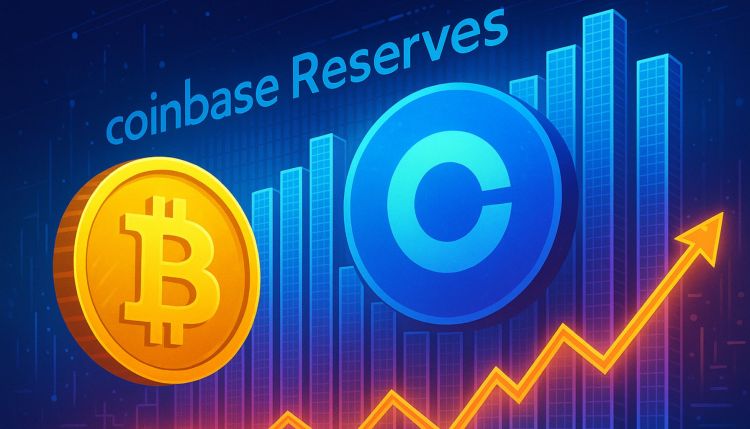Reason to trust

How Our News is Made
Strict editorial policy that focuses on accuracy, relevance, and impartiality
Ad discliamer
Morbi pretium leo et nisl aliquam mollis. Quisque arcu lorem, ultricies quis pellentesque nec, ullamcorper eu odio.
It starts with a papercut. A single missing feature that makes you sigh. Then another—a flicker of lag right before you click “buy.”
Soon, you have a thousand of them. Before you know it, your trading strategy isn’t about the market anymore; it’s a series of elaborate workarounds designed to outsmart the very platform you’re paying to use.
This slow-burn frustration had become my background noise, the static of my daily routine. For those who know me (looking at you, Carl), my entire world was built inside Coinlocally. It’s a perfectly fine exchange, and I’d mastered it. But my mastery.. was a list of “don’ts” and “can’ts.”
The best traders adapt, right? We learn to live with the tools we have. A missing feature becomes a challenge to overcome. A clunky interface becomes muscle memory…
But when I spent another frantic twenty minutes cobbling together a workaround for a simple function that any modern platform should have, only to look up and see I’d missed the market move entirely, something inside me clicked.
I’m done with this toxic relationship, I told myself. It wasn’t a rage-quit; it was a quiet, nagging question: Is this really as good as it gets?
And so began Day One of my quest for a new trading home.
Really, Toobit?
Today’s candidate is a fairly new but popular exchange called Toobit, and I wasn’t hopeful.
Like really, the name is Toobit? It’s a little on the nose isn’t it, William Shakespeare?
I fully expected to spend the next few hours fumbling around, trying to find the “buy” button. Instead, the immediate reaction was suspicion.
It was all too easy, too clean. The layout made sense. It felt a little strange, honestly. My muscle memory, trained by years of cluttered interfaces and needless complexity, was suddenly useless.
Honestly, it made me ask: have I just been conditioned to expect chaos, or is this platform as straightforward as it appears?
This demanded a closer look. So, I decided to break down the experience, piece by piece, to see how the effortless design of Toobit really compares to the familiar friction of Coinlocally.
Comparing Toobit and Coinlocally
1. Trading pairs
The first thing I did was compare the asset lists, and this is where the differences became stark. On Toobit, the list just kept scrolling.
I counted over 400 USDT-margined Futures pairs and more than 300 for spot trading. It’s the kind of selection where you can hedge, chase an emerging altcoin, or run an arbitrage play without feeling like you’ve hit a wall.
Flipping back to my familiar Coinlocally account felt… quiet. With its 110-or-so spot pairs and no easily found futures data, the playground suddenly seemed a lot smaller.
If your strategy involves anything beyond the usual suspects, you start to feel those walls closing in.
Out of habit, I then looked them both up on CoinMarketCap. This is where it got strange. Finding Coinlocally wasn’t straightforward, but the bigger issue for me was the lack of visible trading volume on their site.
Trading without seeing volume is like driving at night with the headlights off. You just don’t have a clear sense of the liquidity, which makes confident execution a tough sell.
2. Leverage
Next, I compared leverage. Toobit provides up to 200x, while Coinlocally stops at 125x. On the surface, both numbers sound high, but the practical difference in capital efficiency is subtle and important.
The goal for a professional trader isn’t to simply “go long at 200x.” It’s about having the option to use less of your own capital to hold the same size position, freeing up the rest of your funds for other opportunities or simply keeping it safer on the sidelines.
That extra headroom Toobit provides? It’s a is a nuanced feature. It doesn’t scream at you, but for those who manage risk carefully, it’s a quiet and significant advantage.
3. USDC-settled Futures
One of my biggest pet peeves is “winning” a trade only to find my profit was eroded because my collateral (like BTC) dumped. It’s a headache I’d rather avoid.
So, seeing that Toobit offers USDC-settled futures was a quiet relief. It means your P&L is in dollars, plain and simple.
You’re betting on the asset’s move, not on the stability of your margin. Coinlocally doesn’t offer this, so you’re always playing two games at once, which feels unnecessarily complicated.
4. Built-in automation
The demands of continuous market monitoring and the potential for emotional decisions can be taxing for any trader, especially when precise entry and exit strategies are necessary.
Toobit streamlines this approach with powerful, integrated tools like DCA (Dollar-Cost Averaging) and Futures Grid trading bots. These automated solutions execute complex strategies for you, perfect for managing ranging markets or disciplined accumulation, ultimately freeing up your time and reducing emotional influence.
This provides a clear advantage over Coinlocally, which offers only basic Grid bots, but notably lacks support for DCA, limiting its usability in sideways or accumulation-focused markets.
5. Break-even price display
Here’s a small feature that makes a huge difference to my mental state: Toobit shows you the break-even price on your position, fees included.
I mean it’s not something I imagine to be terribly complicated (No I’m not a developer), but this nifty little addition saves me a lot of time.
No more mental gymnastics or pulling out a calculator to know if you’re actually in profit. It’s a simple dose of reality that lets you make quicker decisions.
This is something you don’t get on Coinlocally, where you’re always doing that fuzzy math in your head, wondering where your true P&L stands.
6. Copy trading
New traders often face a steep learning curve in developing profitable strategies, while many others seek convenient passive income opportunities.
Toobit makes professional-level trading accessible to everyone through its robust Copy Trading feature. Users can automatically replicate the strategies of top-performing experts with a single click, providing a low-barrier entry for novices to learn and potentially profit, or for anyone looking to diversify their portfolio with minimal direct involvement.
Unfortunately, Coinlocally doesn’t offer this feature, making it harder for new users to participate confidently or learn by doing. If you’re new, you’re left to navigate the market on your own.
7. Position control
Advanced traders frequently require granular control over their positions for complex hedging and multi-layered strategies, a capability not always available on more basic exchanges.
Toobit delivers this precision with support for both split and merged position modes. This flexibility allows sophisticated traders (like myself) to manage multiple positions on the same asset independently, enabling nuanced strategies and maximizing opportunities in varying market conditions. For example, you can hold a long-term BTC position while simultaneously scalping intraday moves, each with its own distinct risk parameters.
This level of control is simply lacking in Coinlocally, which often forces all trades into a single averaged position, severely limiting strategic precision.
8. Welcome bonus
I’m usually skeptical of welcome bonuses, but free capital is free capital.
Toobit’s offer is pretty straightforward, giving you up to 15,000 USDT for doing basic things like signing up and making a trade. It’s a decent runway to test the platform with their money.
Coinlocally offers something similar, but it tops out at a lower number (around 6,840 USDT), so the runway is just shorter.
9. Guaranteed TP/SL orders
There’s no worse feeling than setting a perfect stop-loss only to watch the price blow right through it in a volatile spike, leaving you with a much bigger loss than planned.
Toobit offers guaranteed TP/SL orders, which means your exit happens at the price you set, period. It’s a simple promise that provides a ton of peace of mind.
Coinlocally doesn’t offer this, so you’re essentially rolling the dice every time volatility picks up.
10. Mark price transparency
I’ve always been paranoid about how exchanges calculate the mark price used for liquidations.
Toobit addresses this directly by utilizing a robust 6-exchange index for calculating mark prices on its Futures products. This multi-source model ensures greater fairness and resilience against price manipulation, providing enhanced user protection during high volatility.
Coinlocally on the other hand, has not disclosed its pricing sources or mark price mechanism, leaving traders like us to speculate about the integrity of their liquidation parameters and the fairness of their system.
11. Passive earning
Beyond active trading, many crypto holders seek ways to grow their assets passively and generate yield from their idle funds. I DCA quite a bit, so there’s always some extra funds lying around.
Toobit caters to this need by providing a full suite of Earn products, including both Fixed-Term and Flexible savings options. This allows users to generate passive income from their cryptocurrency holdings, appealing to long-term investors and yield seekers who want their assets to work for them.
Coinlocally? No Earn or stacking products at all. That’s a big miss for long-term holders and passive income seekers.
12. Liquidity
Effective trading hinges on deep liquidity for smooth execution and minimal slippage. During active trading sessions, Toobit consistently delivered tighter spreads and cleaner market order fills, even on mid-cap altcoins. For traders who prioritize execution quality and reduced slippage, this makes a tangible difference in profitability.
Coinlocally’s order books, by comparison, often felt thinner and occasionally lagged, particularly during periods of high volatility.
It’s not just about stats, it’s how it feels when you click that button. Toobit felt responsive and professional. Coinlocally felt… okay, but a bit light.
13. Transparency
Trust in an exchange is paramount, yet many platforms lack clear proof of their financial health, raising concerns about asset security.
Toobit builds this trust through explicit financial transparency, having publicly disclosed its reserves exceeding $100 million USD, signaling strong capital backing and a commitment to accountability. This public commitment reassures users about the safety of their assets.
Coinlocally, unfortunately, has not released any reserve disclosures, and I’m just as clueless as you about the security and backing of their funds, which is a critical oversight in today’s crypto landscape.
Verdict: One platform clearly leads
Now that I’ve actually gotten this all out in writing, it feels a little surreal. Like, did I really trade on Coinlocally for that long? It’s clear I had become so accustomed to the workarounds and limitations that I stopped seeing them as problems. They were just… part of the job.
Coinlocally isn’t a bad platform; it’s just a limited one that I had outgrown. Toobit, on the other hand, felt like it was built for the trader I am today. The wider asset selection, the useful automation, the tangible transparency. These things aren’t just bullet-point features. They add up to a trading environment that removes the friction I didn’t even realize was slowing me down.
So if you’re in the same boat I was, I’ll just leave you with the question that started all this: Is this really as good as it gets? After this experience, I can confidently say the answer is no.
Which exchange should I do next?

















